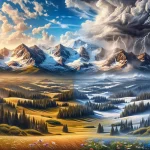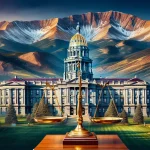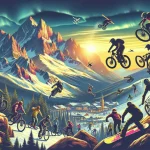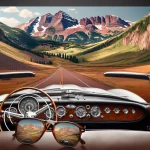Colorado may not be the first place that comes to mind when thinking about seeing the Aurora Borealis or the Northern Lights. However, the state offers excellent opportunities to witness this dazzling natural phenomenon.
In This Article
Aurora Nature in Colorado refers to the state’s ideal conditions for viewing the magical Aurora Borealis light show. With high-altitude locations away from light pollution, cold and clear winter nights, and a location at relatively low latitudes for auroras, Colorado has emerged as a top destination for aurora chasing in the United States.
This article provides an in-depth guide to Aurora Nature in Colorado, including the best places and times to see the Northern Lights, photography tips, adventure tours, wildlife viewing, scientific background, and more. We’ll cover everything you need to know to witness the Northern Lights in Colorado, from the science behind the auroras to indigenous cultural interpretations.
TL;DR
- Colorado's high elevation, clear winter nights, and location make it one of the best places to see the Northern Lights in the lower 48 states.
- Late fall through early spring offers the best chances to catch the auroras, especially during solar maximum years.
- Capturing the lights through long-exposure photography and time-lapse videos takes some skill but delivers spectacular results.
When and Where to See the Northern Lights in Colorado
The aurora borealis is only visible on cold, clear nights, which typically occur between late fall and early spring in Colorado. During these months, solar activity triggers the light peaks as well.
Aurora Forecasts
Monitoring aurora forecasts gives the likelihood of witnessing the elusive phenomenon on any given night. These predict the auroral oval extending far enough south for the lights to be observable from Colorado. Peak chances usually occur between 10 PM to 2 AM.
Prime Viewing Locations
Dark sky preserves like the San Luis Valley in southern Colorado and remote mountain areas offer the best settings to spot the auroras. Facing north also improves the viewing angle. Some ideal places include:
- Great Sand Dunes National Park
- Black Canyon of the Gunnison National Park
- Rocky Mountain National Park
- State wilderness areas and open spaces
Avoid light pollution from cities and towns for optimal stargazing.
The Significance of the Winter Solstice
The winter solstice marks the longest night and shortest day of the year. This coincides with peak solar activity that powers the Northern Lights. Planning an Aurora hunting trip around December 21st gives you the maximum hours of darkness to catch the brilliant displays.
Capturing the Northern Lights Through Photography
Photographing the auroras takes patience and the right gear but delivers phenomenal results.
Winter Night Sky Photography Tips
Equipment like a DSLR camera able to take long exposures, a sturdy tripod, and a fast wide-angle lens are essential. Manual mode allows you to adjust settings like ISO, aperture, and shutter speed to capture faint lights.
Aurora Time-Lapse Photography
Recording a time-lapse video compresses the dancing lights into a short clip. Use the widest, fastest lens possible on full-frame sensor cameras. Set ISO between 800-3200 and exposure times from 5-30 seconds. Taking hundreds of photos over several hours creates a mesmerizing compressed Aurora sequence when stitched together.
Aurora Adventure Tours and Activities
Joining organized excursions led by experienced guides maximizes your chances of catching the auroras while minimizing hassles.
Aurora Chasing Tours
Aurora chasing tours bring you to ideal viewing locations based on weather forecasts and solar activity. Guides share photography advice and offer interesting scientific and cultural commentary about the lights. Tours typically involve transportation in vans suitable for winter conditions.
Winter Camping Under the Northern Lights
Bundling up and winter under the stars provides an immersive Aurora hunting experience. You can observe the dancing lights while relaxing around a campfire in remote mountain settings only accessible via snowshoeing or cross-country skiing.
Northern Lights Cruises
For those who want Aurora viewing with extra comforts, Northern Lights cruises offer an enchanting experience, sailing on glass-domed boats out onto serene lakes at night. You’ll get a prime view of the Aurora Borealis, also known as the Northern Lights, while staying cozy indoors, with hot drinks and gourmet meals included. These cruises combine luxury with the raw beauty of nature, allowing enthusiasts to marvel at the aurora’s dancing lights, a phenomenon caused by charged particles from the sun interacting with the Earth’s magnetic field, all from the comfort of a warm interior.
Winter Wildlife and Astro Tourism
Aurora hunting in Colorado also enables opportunities to observe incredible winter wildlife and celestial sights beyond the Northern Lights.
Winter Wildlife Watching
The pristine natural habitats of Star K Ranch and Morrison Nature Center become a winter wonderland, home to Bighorn sheep, elk, moose, coyotes, and even the occasional mountain lion. These animals venture out in the Rocky Mountain winters, providing a unique backdrop to your nighttime Aurora quests. The thrill of seeing eyes reflecting your headlamp, illuminated by the aurora and winter moonlight, adds an extra dimension to this adventure.
Winter Astrotourism
In addition, Colorado’s ideal dark sky conditions offer unparalleled opportunities for winter astrotourism. The same remote locations prized for their Aurora visibility also serve as stellar vantage points for stargazing, where thousands of glittering stars and celestial sights like the Milky Way come into view.
Astronomy buffs are invited to explore the universe’s mysteries through night sky tours and workshops, focusing on observing planets, galaxies, and more, all while discussing the intricate dance of electrons and gases that light up the night sky with auroras at both poles, including the lesser-known Aurora Australis or Southern Lights.
The Science of the Northern Lights
While often shrouded in mystery and myth, the auroras have a rather straightforward scientific explanation.
What Triggers the Aurora Borealis?
The Northern Lights occur when solar winds and flares send charged particles streaming toward Earth’s poles and collide with gasses in the atmosphere. These high-energy collisions make the air glow in shimmering curtains of green, blue, pink, purple, and red. Oxygen gives off the most common greenish hue.
Myths and Legends
Many indigenous cultures interpret the auroras as spiritual signs, mythical battles, dancing ancestors, and more. While their explanations differed from science, their stories reflected the awe and wonder the dazzling lights invoke. Modern viewers can still appreciate both the scientific beauty and cultural mystique of witnessing the phenomena.
Aurora Viewing Safety and Preparedness
When braving cold temperatures and remote locations in search of the Northern Lights, safety should come first.
Aurora Viewing Safety Tips
- Check weather and avalanche forecasts before heading out at night.
- Tell someone your plans and expected return time.
- Bring emergency supplies like extra food, water, warm layers, flashlight, an after first aid kit, etc.
- Be aware of wildlife like bears that could be active in winter.
Cold Weather Survival Tips
Some key ways to prepare for and survive frigid winter temperatures while Aurora hunting include:
- Wear insulating synthetic or wool layers
- Bring chemical or battery-powered hand and foot warmers
- Stay hydrated and fueled with high-calorie foods
- Know the signs of frostbite and hypothermia
- Keep backup batteries for cameras and phones warm against your body
FAQ
Here are answers to some common questions about witnessing the magical light show of the auroras in Colorado:
What are the best months to see the Northern Lights in Colorado?
The optimal months are December, January, and February when longer winter nights coincide with peak solar activity. However, displays are still possible from September through April.
Where are the most reliable spots to see the auroras in Colorado?
The best locations are high-altitude dark sky preserves like Great Sand Dunes and Black Canyon of the Gunnison National Parks, remote wilderness areas, and facing north from Rocky Mountain National Park.
What causes the different colors in auroras?
Different elements like oxygen, nitrogen, and hydrogen colliding with charged particles from the Sun at varying altitudes give off signature colors from green to red and purple.
Do I need to book a tour, or can I view them independently?
While tours make logistics easier, you can witness the Northern Lights independently if you scout locations, watch forecasts, prepare properly, and have reasonable expectations.
What photography equipment and settings should I use?
A DSLR with manual mode, a fast wide-angle lens, a sturdy tripod, and settings like high ISO, long shutter speeds, and wide apertures work best to capture the auroras.






